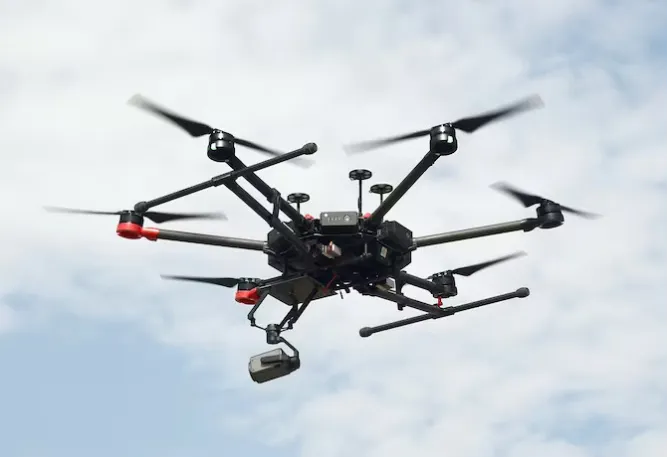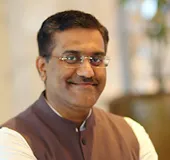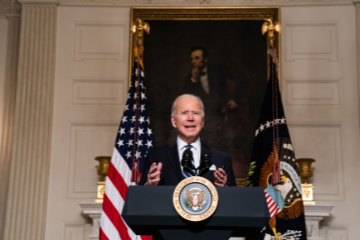
While the use of unmanned aircraft systems (UAS) or drones was initially exclusive to the military, it has seen an exponential increase in recent times, particularly in urban areas. They have found utility in various civilian applications such as disaster management, surveillance, package delivery, traffic monitoring and healthcare services, not to mention their increasing involvement in the planning and development of smart cities. Their flexibility and mobility allow them access to remote areas including those which are potentially hazardous or inaccessible to humans. The recent uptake in drone-based transport applications will only lead to a further escalation in their numbers. However, this will also be accompanied by a higher risk of accidents in the sky which could have potentially disastrous consequences for civil aviation and infrastructure. There is an urgent need for governments around the world to devise comprehensive policies regarding drone usage in urban spaces if this situation is to be avoided.
The onset of air taxis
As a representative example, the case of Israel should be considered, which has recently begun conducting test flights of air taxis in Jerusalem as part of the Israel National Drone Initiative. The main aim of the project is to transport passengers and heavy cargo to relieve traffic congestion on Israel’s busy roads while also providing commercial and public services including during emergency scenarios like earthquakes and delivering urgent medical supplies. So, while drones will only provide emergency services in the short run, last-mile delivery and air taxis are just around the corner.
The main aim of the project is to transport passengers and heavy cargo to relieve traffic congestion on Israel’s busy roads while also providing commercial and public services including during emergency scenarios like earthquakes and delivering urgent medical supplies.
On 13 October 2023, EHang’s EH216-S electric vertical take-off and landing (eVTOL) was awarded a “type certificate” by the Civil Aviation Administration of China, officially making it the world’s first flying taxi, though the company still requires an operation permit before it can begin commercial service. It is a two-seater drone possessing a range of 30 kilometres, with a speed of up to 130 km/h, and will function without a pilot on board.
In India, InterGlobe Enterprises, the parent company of IndiGo, recently signed a Memorandum of Understanding with Archer Aviation, a US-based company which develops eVTOL aircraft, with the objective of introducing an electric air taxi service in India by 2026. A 27-kilometre-long stretch from Connaught Place in New Delhi to Gurugram in Haryana will serve as the pilot project. While traffic congestion can elongate the trip to more than 90 minutes by road, the air taxi will take a flat 7 minutes.
Additionally, it must be mentioned that there are several other similar initiatives currently underway around the world. It can thus be concluded that air taxis are no longer an idea of the distant future, but are poised to become a reality imminently, with commercial operation beginning as early as 2024 in some instances. Establishing a definitive drone policy in urban spaces has therefore acquired universal importance, and India must accelerate its efforts in this direction as well.
The need for a comprehensive drone policy in urban spaces
One of the primary motivations for putting a drone policy in place is to provide the physical and digital infrastructure required for drones to function safely and effectively. The first issue that needs to be addressed is that of airspace. Drones fly at much lower altitudes than conventional aircraft, and the exact boundaries of this lower airspace are not well defined, particularly for larger and heavier drones like air taxis. Airborne navigation safety issues such as landing and take-off patterns, and proximity to infrastructure have to be further explored. This can be achieved via the creation of more strategic no-fly zones and the designating specific corridors for drone operators. In other words, drone highways need to be established, along with an air-road policing system.
Drones fly at much lower altitudes than conventional aircraft, and the exact boundaries of this lower airspace are not well defined, particularly for larger and heavier drones like air taxis.
Drone ports will be required to serve as take-off and landing sites. Standards and specifications need to be established to optimise efficiency and guarantee safety. The location of these ports will need to be strategically planned and decided, including ascertaining their proximity to city limits. For instance, they could be built atop high buildings, at existing airports or may require the creation of new designated areas. Energy infrastructure including charging and refuelling stations will also need to be incorporated into the drone ports.
Traffic management is another issue which must be addressed. This will involve developing guidelines to ensure the safe and efficient operation of drones without compromising their operational consistency. Communication lines will need to be set up to provide situational awareness to drone operators. The optimal safe spacing between drones must be determined. The certification process for operating organisations needs to be defined. Regulations for operational safety during adverse weather conditions also need to be put in place, which will require running simulations and live demonstrations to establish thresholds for factors like visibility, wind speed and precipitation.
The current Indian scenario and the inadequacy of the existing framework
Currently, drones are segregated from manned aircraft and are usually operated on a case-by-case basis after seeking approval from the relevant authorities. In India, for instance, this is done via the “Digital Sky Platform,” and permission is mandatory before every operation of a drone. Though the Drone Rules 2021 and subsequently, the Drone (Amendment) Rules, 2022, have demarcated a separate airspace for drones, including green, yellow and red zones, drone highways are yet to be established. Moreover, they only cover drones weighing up to 500 kg whereas the EH216-S for instance, has a maximum take-off weight of 620 kg.
NASA has conceptualised a “UAS Traffic Management” system, which provides the relevant framework and can serve as guidelines for policymakers.
Drones are also only allowed to operate within visual line-of-sight post-risk assessment, but there are no regulations in place for autonomous beyond visual line-of-sight (BVLOS) operation or even large-scale operations within line-of-sight. The US Federal Aviation Administration (FAA) recently established the BVLOS Advisory and Rulemaking Committee. NASA has conceptualised a “UAS Traffic Management” system, which provides the relevant framework and can serve as guidelines for policymakers.
While most air taxis are still semi-autonomous and require a pilot on board, fully autonomous taxis are not far off, considering the fact that the EH216-S does not require an onboard pilot. Even autonomous drones, however, will require operators on the ground in case of emergencies or malfunctions. Therefore, training and certification of drone pilots is an important issue which needs to be addressed. India has taken a step in this direction recently, when it notified the new Drone (Amendment) Rules 2023 for drone pilots, effective from 27 September 2023. The rules lay out provisions regarding identity proof and eligibility of drone pilots, along with the procedure for obtaining a remote pilot certificate. These will, however, require further modification with the advent of larger and more complex drones like air taxis.
With drone technology moving forward at a breakneck pace, air taxis and delivery drones are set to become commonplace in the very near future. In fact, in cities like Shenzhen in China, delivery drones are already a part of daily life. The situation is quite similar to the introduction of commercial automobiles in the 1960s when an entirely new traffic regulatory framework had to be created. While this will be a boon for relieving traffic congestion, reducing delivery times and providing emergency medical services, policy measures regarding them need to be put into place immediately.
The situation is quite similar to the introduction of commercial automobiles in the 1960s when an entirely new traffic regulatory framework had to be created.
While most countries do have some sort of drone policy in place already, there is no consensus among them at the moment, and they fluctuate wildly depending on the location. They are also woefully inadequate to deal with most of the aforementioned issues involving drone taxis. With commercial drone operation just around the corner, governments need to be prepared for increased air traffic flow in urban areas and policymakers need to show haste in coming up with relevant guidelines and frameworks to ensure the smooth and safe functioning of drones, the lack of which could lead to a potentially chaotic situation in the skies.
Sameer Patil is a Senior Fellow with the Centre for Security Strategy and Technology at the Observer Research Foundation
Prateek Tripathi is a Research Assistant Centre For Security Strategy and Technology at the Observer Research Foundation
The views expressed above belong to the author(s). ORF research and analyses now available on Telegram! Click here to access our curated content — blogs, longforms and interviews.




 PREV
PREV



